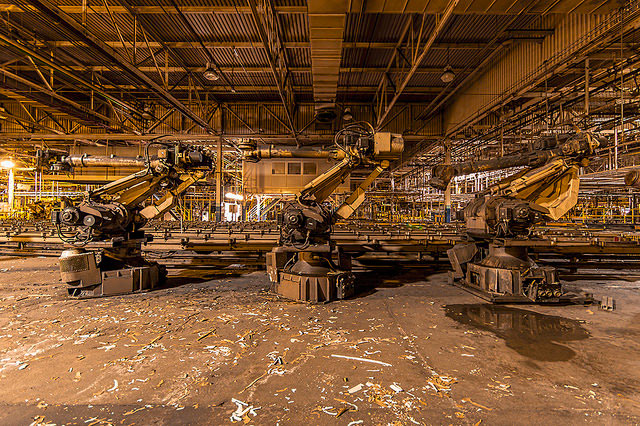
The Bureau of Labor Statistics (BLS) reported that productivity grew at a 3 percent annual rate in the third quarter of 2017. While this report got little attention, it is potentially very good news.
Before going into the good news part, it is worth briefly saying a bit about what productivity is. Productivity measures the value of the goods and services produced in an hour of work. It is the main determinant of living standards. If we want more or better housing or health care, we either have to work more hours to produce it, or we need higher productivity.
Alternatively, we may decide we are content with our material living standards but would like more leisure time. This could take the form of shorter workweeks, parental and family leave or vacations. However, this would also require more productivity.
We could improve the living standards of much of the population with policies that reverse the upward redistribution of the last four decades. But if we don’t get productivity growth going forward, there is a limit to how far we can go with such policies. Unless people are content with stagnant living standards, we need productivity growth.
This is why the third quarter number is such good news. Contrary to the endless stories in the media about robots taking all the jobs, robots actually have been taking very few jobs in recent years. Productivity growth, which reflects the rate at which robots and other technologies displace workers, has been extremely slow in recent years. In fact, it has averaged less than 1 percent annually over the last five years.
By contrast, productivity growth averaged almost 3 percent in the years from 1995 to 2005. This was also the average rate of productivity growth in the long boom that followed World War II, from 1947 to 1973. The quick pace of productivity growth allowed for rapid increases in wages and living standards, especially in the years after World War II when strong unions and government policies ensured that workers shared in the gains of growth.
The lackluster productivity growth in the years since 2005 has been one of the reasons that wages have been stagnant. The weak labor market caused by the high unemployment of the Great Recession led to falling wages for most workers, as they had little bargaining power.
This has changed in the last two or three years as unemployment has fallen to levels not seen since the 1990s boom. The tighter labor market has allowed workers, especially those at the middle and bottom of the income distribution, to make up some of the ground lost in the Great Recession, as real wages are now rising by roughly 1 percent a year.
This is good news, but to see the strong 2-3 percent annual wage growth of the late 1990s or the long post-war boom, we need more rapid productivity growth. This is why the third quarter number is such good news.
But we should hold off celebrating for the moment. Productivity data are notoriously erratic. Sometimes we see a big jump in one quarter followed by extraordinary weak or even negative growth in subsequent quarters, so we will need more data before we can be confident that this is the start of a new trend with higher growth.
But there are some reasons for thinking that we may be at a turning point. When labor markets start to tighten and wages rise, some low productivity jobs disappear just because they are no longer profitable for businesses.
Think of a greeter at Walmart or a clerk working the midnight shift at a convenience store. It may be worth hiring these people at the federal minimum wage of $7.25 an hour. But if a tight labor market pushes up wages to $14 an hour, these low paying, low productivity jobs may go unfilled. If we have fewer low productivity jobs, average productivity rises.
Higher pay also gives employers more incentive to invest in technology in order to reduce their need for workers. And we have seen an uptick in equipment investment over the last year, which is consistent with businesses trying to economize on labor.
We’ll want to see at least two more quarters of solid productivity growth to support the case that we have turned the corner, but the most recent data is definitely good news that deserved some attention. Among other things, it could mean that we already have the faster growth promised by Donald Trump with his tax cut, without even having to do the tax cut. That might be bad news to the 1 percent who stood to get the bulk of the gains, but it is very good news for the rest of us.
Join us in defending the truth before it’s too late
The future of independent journalism is uncertain, and the consequences of losing it are too grave to ignore. To ensure Truthout remains safe, strong, and free, we need to raise $46,000 in the next 7 days. Every dollar raised goes directly toward the costs of producing news you can trust.
Please give what you can — because by supporting us with a tax-deductible donation, you’re not just preserving a source of news, you’re helping to safeguard what’s left of our democracy.